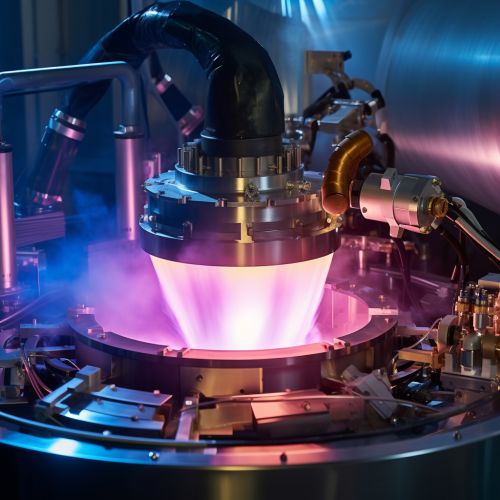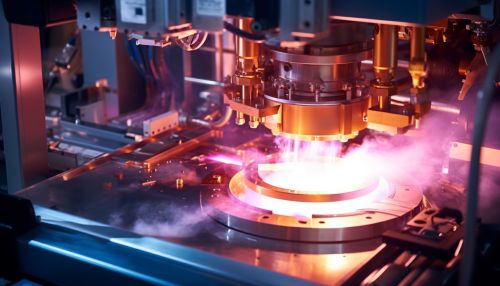Physical Vapor Deposition
Introduction
Physical Vapor Deposition (PVD) is a family of surface finishing techniques used to deposit thin films of material onto various surfaces. These processes operate under vacuum conditions and involve the conversion of a solid material into a vapor, which is then deposited onto a substrate. PVD processes are commonly used in a wide range of industries, including electronics, automotive, and aerospace, due to their ability to produce high-quality, durable coatings.


History
The concept of PVD has been around since the 19th century, when scientists first began experimenting with vacuum technology and the deposition of thin films. The first practical applications of PVD techniques, however, did not emerge until the mid-20th century, with the development of semiconductor technology and the need for thin, uniform coatings in various industrial applications.
Principles of Operation
PVD processes operate on the basic principle of converting a solid material into a vapor, which is then deposited onto a substrate. This is achieved through a variety of methods, including thermal evaporation, sputtering, and pulsed laser deposition.
Thermal Evaporation
In thermal evaporation, the material to be deposited is heated to a high temperature, causing it to vaporize. The vapor then travels across the vacuum chamber and condenses on the substrate, forming a thin film.
Sputtering
Sputtering involves the use of a plasma to eject atoms from a target material. These atoms then travel across the vacuum chamber and deposit onto the substrate.
Pulsed Laser Deposition
In pulsed laser deposition, a high-power laser is used to vaporize a small portion of the target material. The resulting vapor then deposits onto the substrate.
Applications
PVD processes are used in a wide range of industries due to their ability to produce high-quality, durable coatings. Some of the most common applications include:
Electronics
In the electronics industry, PVD is used to deposit thin films of metals and insulators for various components, including integrated circuits and sensors.
Automotive
In the automotive industry, PVD is used to apply decorative and protective coatings to various parts, such as wheels, trim, and emblems.
Aerospace
In the aerospace industry, PVD is used to apply thin films of materials with specific properties, such as high temperature resistance or low friction, to various components.
Advantages and Disadvantages
Like any technology, PVD has its advantages and disadvantages.
Advantages
One of the main advantages of PVD is its ability to produce high-quality, durable coatings. PVD processes operate under vacuum conditions, which eliminates the possibility of contamination and ensures a high degree of purity in the deposited films. Additionally, PVD processes can be precisely controlled, allowing for the deposition of films with specific thicknesses and compositions.
Disadvantages
On the other hand, PVD processes can be relatively expensive, due to the cost of the vacuum equipment and the high energy consumption. Additionally, PVD processes can be somewhat slow, particularly for large-scale industrial applications.
Future Trends
As technology continues to advance, so too does the field of PVD. One of the main trends in the field is the development of new materials and processes, aimed at improving the quality and performance of PVD coatings. Additionally, there is a growing interest in the use of PVD for the deposition of nanostructured materials, which have unique properties and potential applications in various fields.
